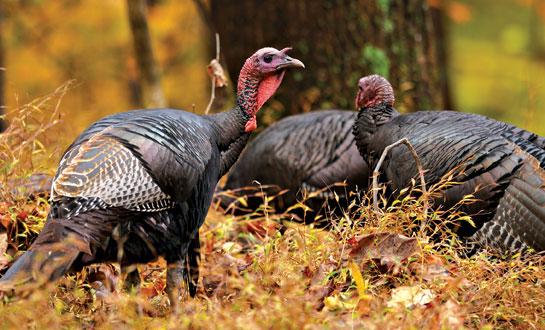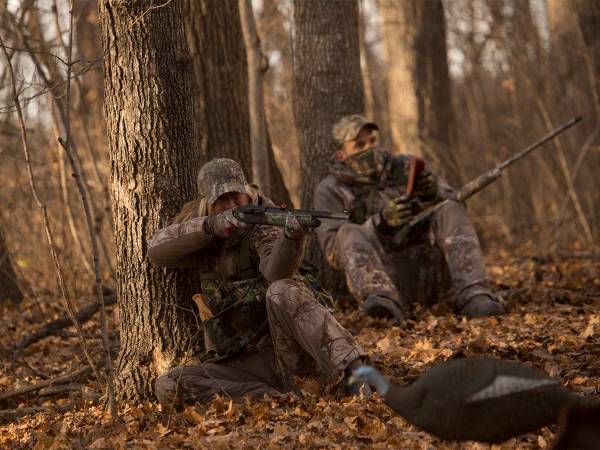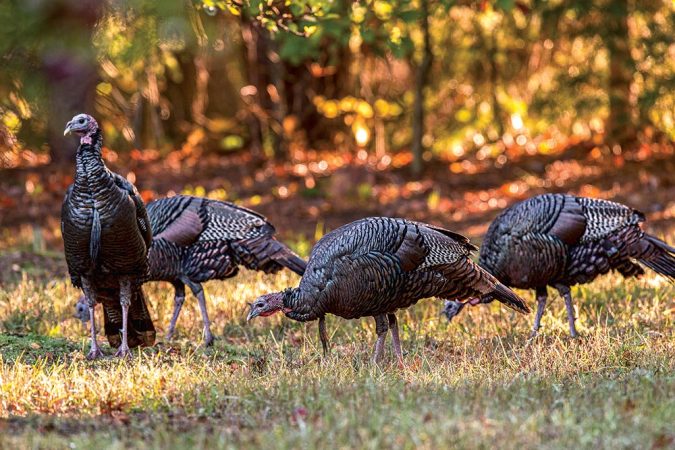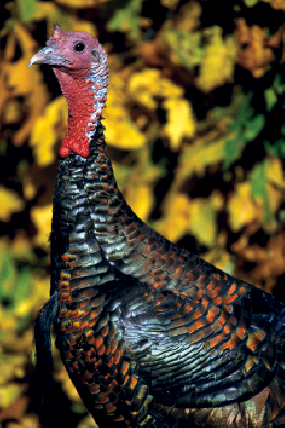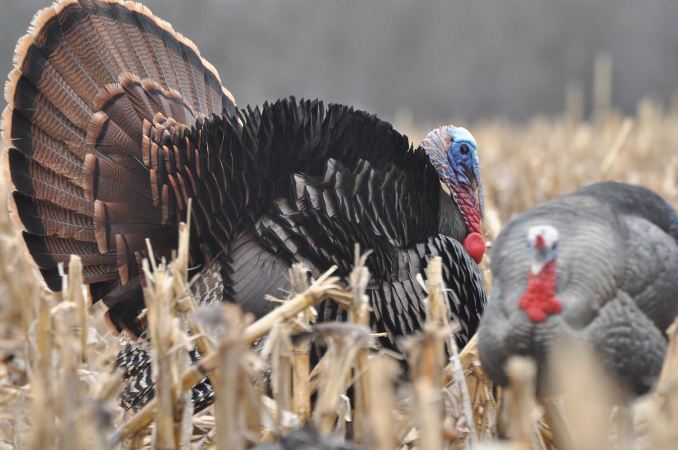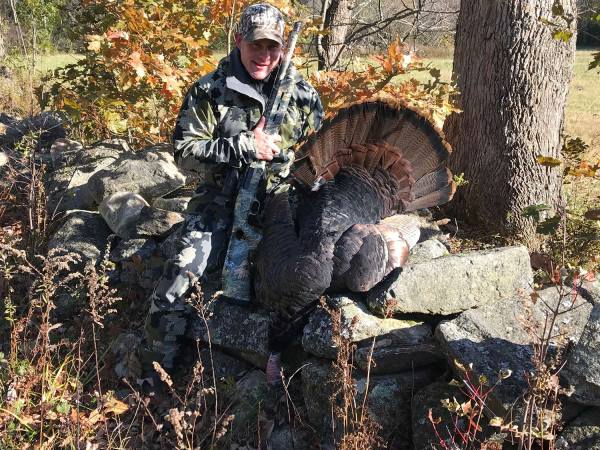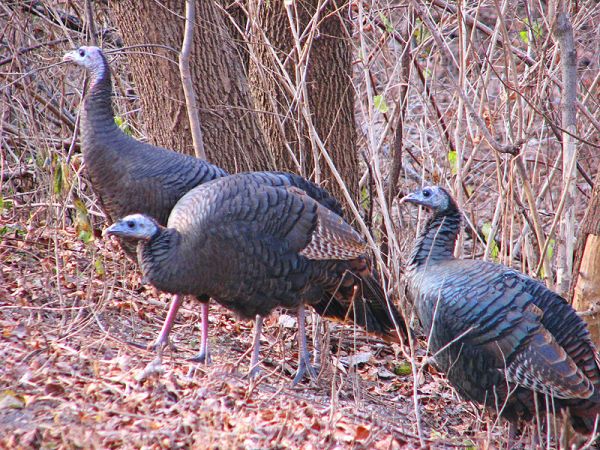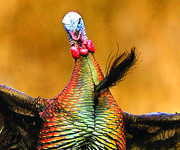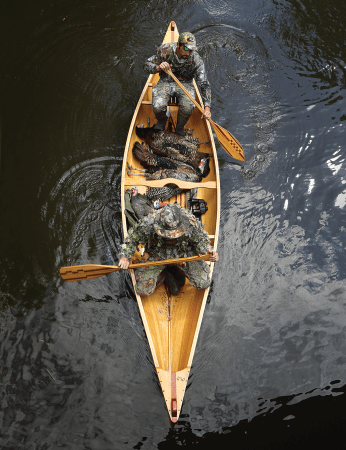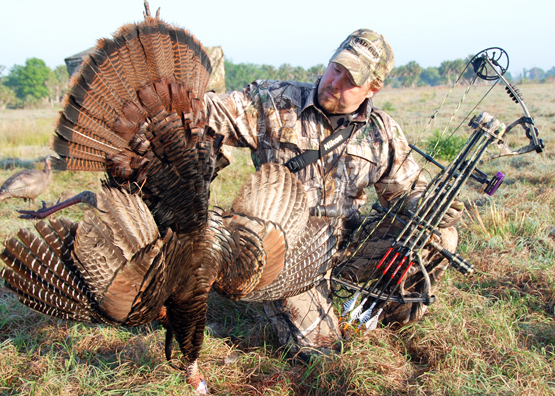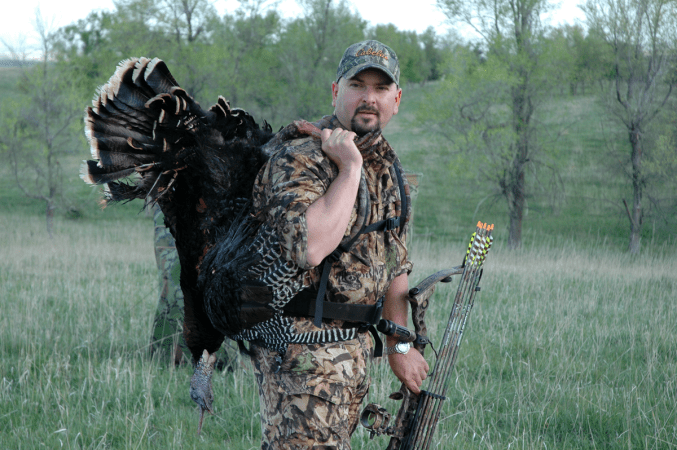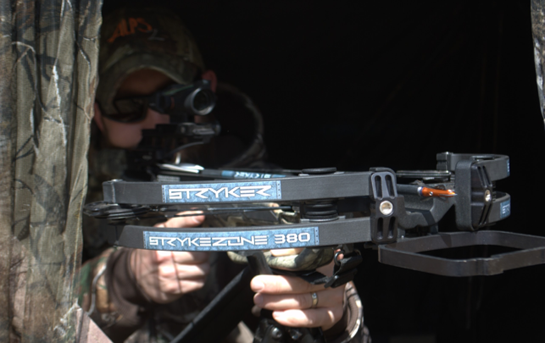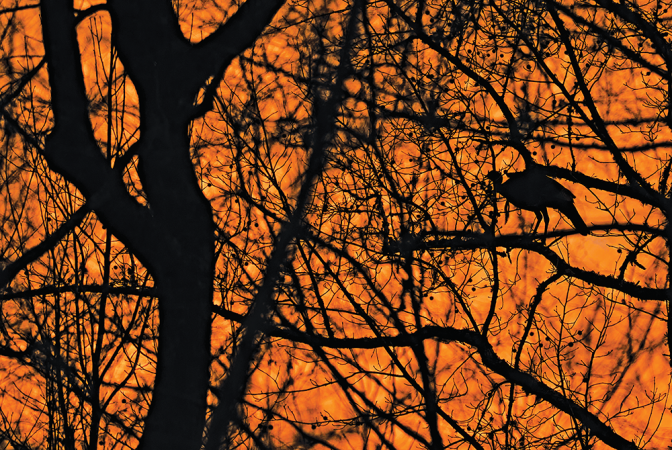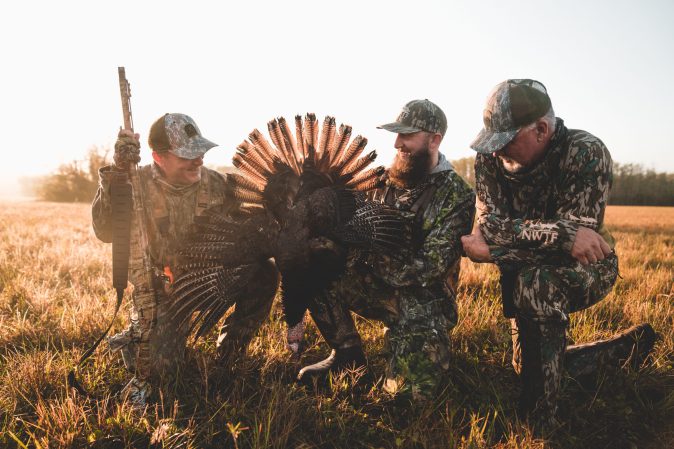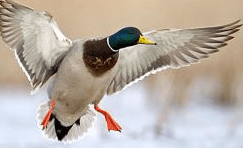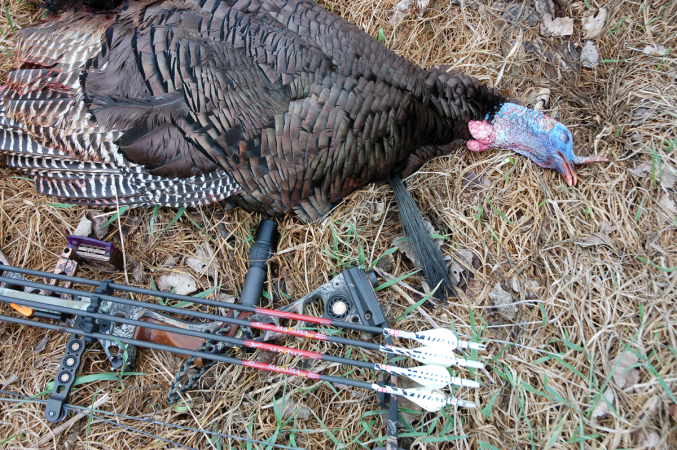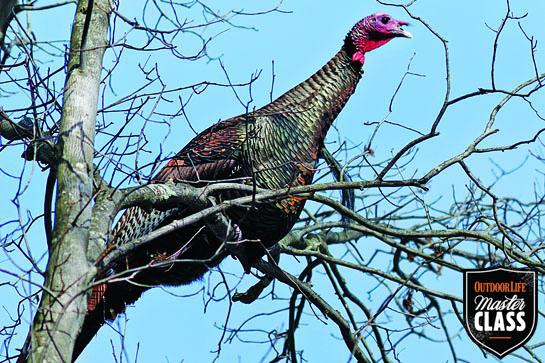Photo by: Ralph Hensley/Windigo Images
Whether you’ve shot your buck early or are just looking for a new bowhunting challenge, wild turkeys offer opportunity and excitement–and the finest meal ever to hit your Thanksgiving table. While bowhunters continue to discover the joys of spring turkey hunting, autumn’s hunt doesn’t see much stick-and-string participation. Yet archery gear is legal in all states that have fall wild turkey seasons.
Gear Considerations
Good news: You can use the same bow-and-arrow setup on wild turkeys that you would use on whitetails or other big game. Exchange retractable-blade broadheads for fixed-blade models, though, to ensure immediate impact and cutting power. On a broadside bird, shoot for the joint where the wing meets the body. On facing-away birds, aim for a middle-of-the-back spine shot.
Because turkeys are ever-vigilant for aerial attacks by hawks and owls–and are easily spooked by any perceived threat from above– you’re best off hunting from a ground blind to hide the movement it takes to draw your bow. Get a small flock of three to five decoys to replicate the wild turkey’s fall habit of traveling in groups. Keep calling simple: Yelps on a box call work great, along with some clucks and purrs and kee-kee whistles.
Five Setups
1) The Fall Classic: Scatter a flock hither and yon, set up, and call the gregarious birds back in. This may be the classic fall hunt, but it’s a bit tough to do when you’re carrying a portable blind. Bowhunters should hunt intact flocks of unsuspecting birds or stay on their feet behind a tree when recalling scattered birds.
2) Hunt Feeding Fields: In the early morning and late afternoon, set up on a harvested field of corn, soybeans, wheat, or other grain, or still-green alfalfa. Stick to the inside corners and other secluded coves and lobes of fields.
3) Hunt Oak Ridges or Flats: Midday, head to the cover of the woods, preferably oak groves where birds scratch for acorns.This is a likely roost area.
4) Hunt the Roost Area: Pitch your blind on a travel route to or from the birds’ roost site.
5) Hunt Water or Moisture: A warm, dry fall moves birds to creek bottoms, pond areas, and spring seeps in the woods where both moisture and forage (greens and bugs) abound.
